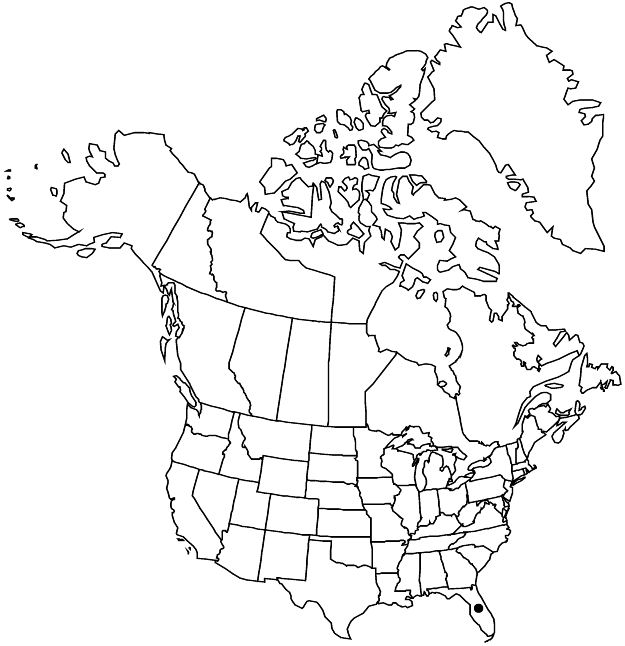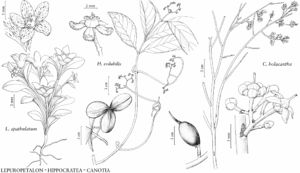Difference between revisions of "Hippocratea volubilis"
Sp. Pl. 2: 1191. 1753.
FNA>Volume Importer |
FNA>Volume Importer |
||
| Line 51: | Line 51: | ||
|publication year=1753 | |publication year=1753 | ||
|special status=Illustrated | |special status=Illustrated | ||
| − | |source xml=https://jpend@bitbucket.org/aafc-mbb/fna-data-curation.git/src/ | + | |source xml=https://jpend@bitbucket.org/aafc-mbb/fna-data-curation.git/src/f50eec43f223ca0e34566be0b046453a0960e173/coarse_grained_fna_xml/V12/V12_451.xml |
|genus=Hippocratea | |genus=Hippocratea | ||
|species=Hippocratea volubilis | |species=Hippocratea volubilis | ||
Revision as of 19:53, 16 December 2019
Vines 20–25 m. Stems much-branched, ascending, green. Leaves: blade elliptic to ovate or obovate, 5–14 × 2–8 cm. Inflorescences 4–12 cm, brownish tomentulose or puberulent. Flowers 4–8 mm diam.; sepals 0.5–1.2 mm; petals 2.5–4 mm. Capsules 4–8 × 1.5–5 cm. Seeds 1.3–2.5 × 4–7 mm, wing obovate-oblong, 2–4 cm.
Phenology: Flowering spring–summer; fruiting fall–winter.
Habitat: Hammocks, stream banks, shores, mangrove and hardwood swamps.
Elevation: 0–10 m.
Distribution

Fla., s Mexico, West Indies, Central America, South America.
Discussion
Hippocratea volubilis often climbs to the tops of trees, binding itself and the supporting vegetation into an impenetrable network.
Selected References
None.
Lower Taxa
None.
